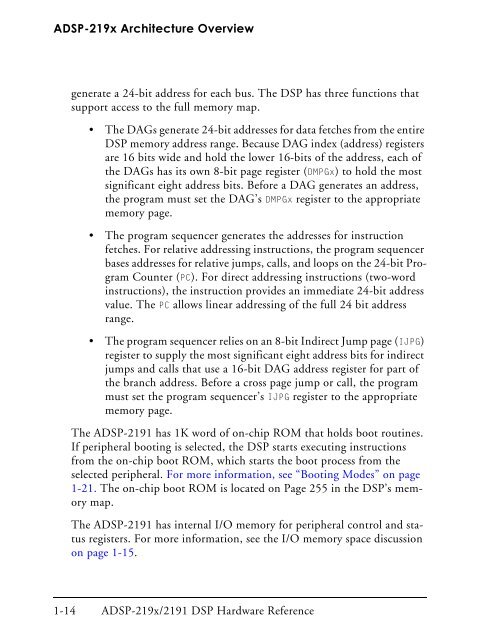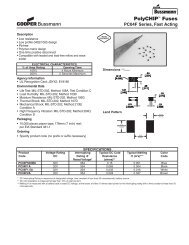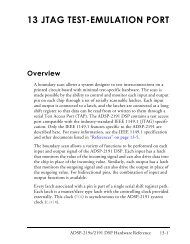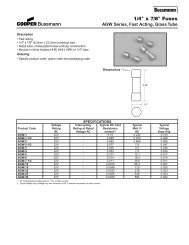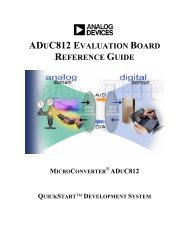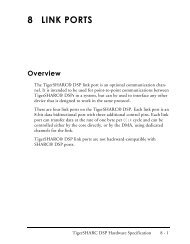ADSP-219x/2191 DSP Hardware Reference, Introduction
ADSP-219x/2191 DSP Hardware Reference, Introduction
ADSP-219x/2191 DSP Hardware Reference, Introduction
You also want an ePaper? Increase the reach of your titles
YUMPU automatically turns print PDFs into web optimized ePapers that Google loves.
<strong>A<strong>DSP</strong></strong>-<strong>219x</strong> Architecture Overviewgenerate a 24-bit address for each bus. The <strong>DSP</strong> has three functions thatsupport access to the full memory map.• The DAGs generate 24-bit addresses for data fetches from the entire<strong>DSP</strong> memory address range. Because DAG index (address) registersare 16 bits wide and hold the lower 16-bits of the address, each ofthe DAGs has its own 8-bit page register (DMPGx) to hold the mostsignificant eight address bits. Before a DAG generates an address,the program must set the DAG’s DMPGx register to the appropriatememory page.• The program sequencer generates the addresses for instructionfetches. For relative addressing instructions, the program sequencerbases addresses for relative jumps, calls, and loops on the 24-bit ProgramCounter (PC). For direct addressing instructions (two-wordinstructions), the instruction provides an immediate 24-bit addressvalue. The PC allows linear addressing of the full 24 bit addressrange.• The program sequencer relies on an 8-bit Indirect Jump page (IJPG)register to supply the most significant eight address bits for indirectjumps and calls that use a 16-bit DAG address register for part ofthe branch address. Before a cross page jump or call, the programmust set the program sequencer’s IJPG register to the appropriatememory page.The <strong>A<strong>DSP</strong></strong>-<strong>2191</strong> has 1K word of on-chip ROM that holds boot routines.If peripheral booting is selected, the <strong>DSP</strong> starts executing instructionsfrom the on-chip boot ROM, which starts the boot process from theselected peripheral. For more information, see “Booting Modes” on page1-21. The on-chip boot ROM is located on Page 255 in the <strong>DSP</strong>’s memorymap.The <strong>A<strong>DSP</strong></strong>-<strong>2191</strong> has internal I/O memory for peripheral control and statusregisters. For more information, see the I/O memory space discussionon page 1-15.1-14 <strong>A<strong>DSP</strong></strong>-<strong>219x</strong>/<strong>2191</strong> <strong>DSP</strong> <strong>Hardware</strong> <strong>Reference</strong>


